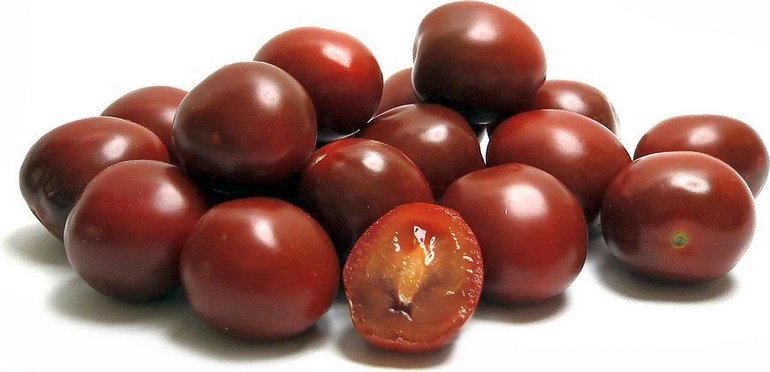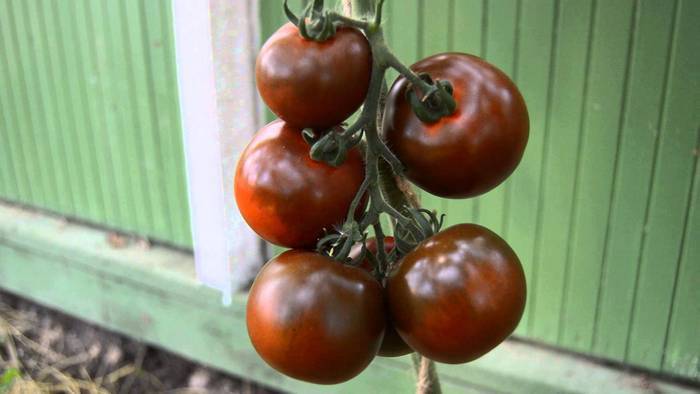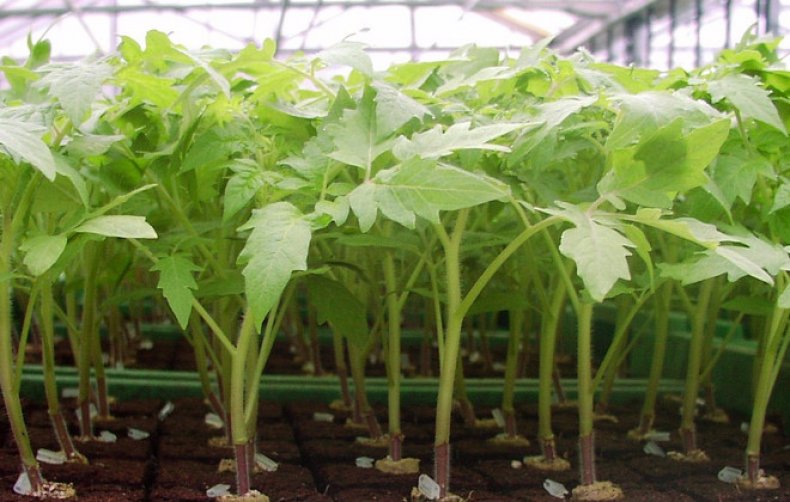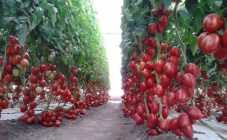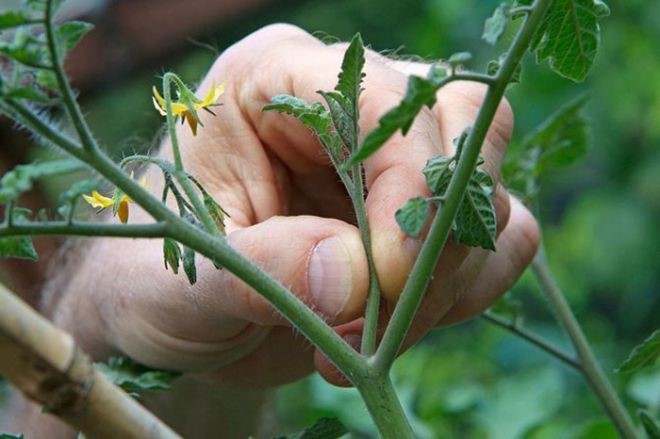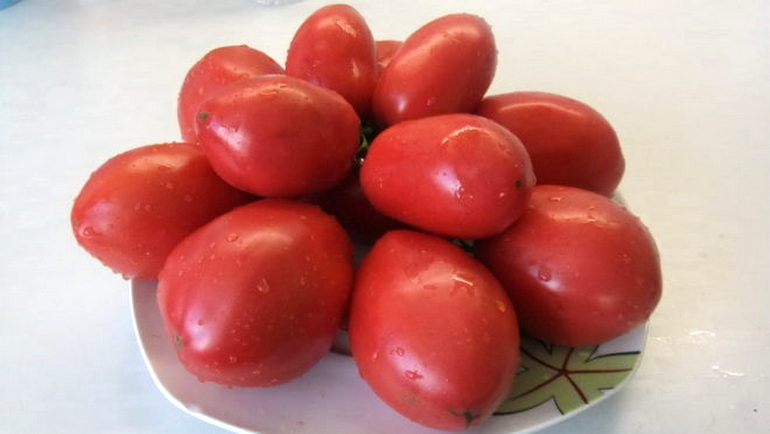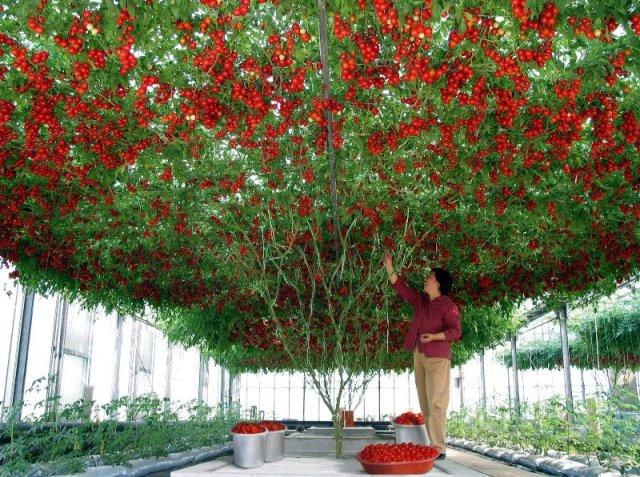Kumato is a tomato variety that was bred by breeders from Belgium, crossing a wild tomato from the Galapagos Islands with a cultivar, and also adding a blackberry-based pigment. This variety is absent in the State Register of Breeding Achievements of Russia. This is not a hybrid.
Characteristics and description of the variety of tomato Kumato
The bush has an indeterminate type of growth, that is, the plant is above 2 m in height. But since the stem is constantly growing, when it reaches 2 m, you need to pinch the top. It has powerful roots, located at a depth of 0.5 m. The leaves are small, dark green. The first fruit cluster grows above the 9th leaf, the next cluster grows after 1-2 leaves.
This is a mid-season variety, that is, Kumato tomatoes must be removed from the bushes 120 days after the first sprouts appear. Can be grown outdoors and in greenhouses.
The fruits are round and oval in shape, with few ribs. The mass of a tomato is 80 g. Each fruit is 5 to 7 cm in diameter. The fruits are almost equal in size. With technical ripeness, they are of a faded green color, there is no spot at the stalk. Ripe "black" Kumato tomatoes have a rather maroon hue.
The fruits have 4 seed chambers. The pulp is fleshy, dark red, sweet, with a flavor of fruits and berries. You can store Kumato tomatoes for a long time. Fresh fruits are very good, but they can also be put in salads, boiled soup, canned, pickled, made tomato paste and juice.
Advantages
Has a number of advantages:
- gives high yields;
- fruits of dessert taste;
- well transported, as they have a dense skin;
- bushes are resistant to hot weather;
- are immune to disease.
Landing
Varietal seeds begin to be sown in early March. They should first be placed for 20 minutes. in a pink solution of potassium permanganate to disinfect, then rinse with distilled water. Can also be placed in Epin's solution.
You need to sprinkle seeds on the ground, sprinkle them with soil by 2 cm. The temperature of the substrate should be about 22 degrees. Then spray the plantings with warm settled water from a spray bottle, cover with a film to create a greenhouse effect, put in a warm place (at least 25 degrees). The film should be lifted daily to ventilate the plantings, monitor the humidity.
When the first shoots grow, usually on the 5th day, the shelter must be removed. And when each seedling grows 2 true leaves, the seedlings should be dived, that is, they should be seated in separate cups. Seedlings must be fed twice with solutions of complex mineral fertilizers.
In mid-May, you can plant the bushes in a greenhouse, and at the end of May, they can be planted in an open area, since at this time there is usually no threat of frost.
Care
It is required to dig holes, making an indent between them of 0.5 m.Drive the pegs into the soil immediately. Then place a seedling in each hole, sprinkle with soil. And immediately tie the plants to the supports with synthetic threads, since synthetics do not contribute to rotting of the stems. Further, the plants need to be watered, the soil must be loosened after each watering so that a crust does not form on the ground, weed weeds, and the plantings must be mulched with peat. Can be fed with organic matter and mineral fertilizers.
The first fruits will appear in July.
Gardeners fell in love with the Kumato variety because of the unusual color of the fruits, from the sweet taste, high yield, and disease resistance.
